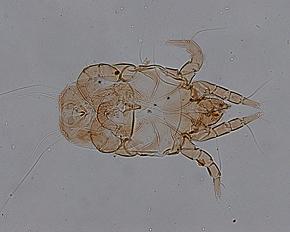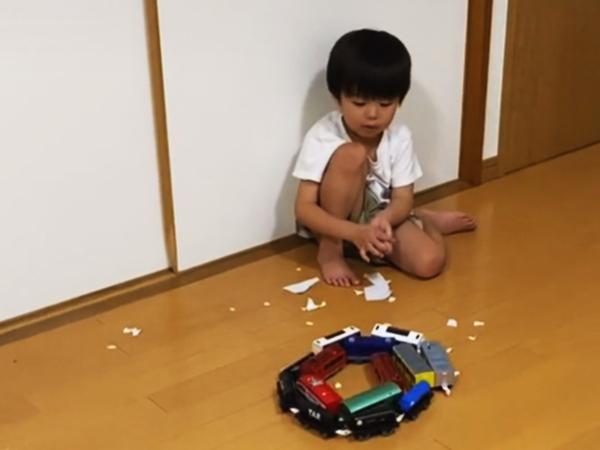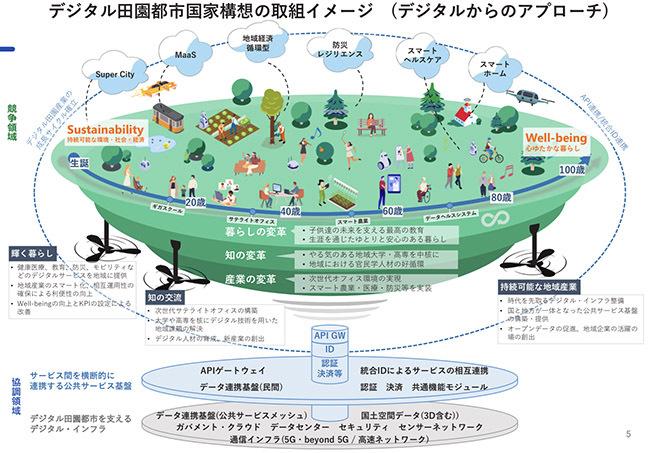The ecology of mites that you seem to know but do not know-what are the really effective measures? : Katsunori Takita's "White Appliances, Amazing Technology" (1/3 page)
In general, I see many articles and information programs about mites, such as "tick breeds on futons during a damp rainy season" and "futon vacuum cleaners and futon dryers are effective for mites countermeasures". This time to do. However, although we share the image of mites as "somehow unpleasant" in the first place, we do not know what kind of ecology mites are.
You can't take effective measures without knowing the enemy you're fighting against! So, here, I learned about the ecology of mites from Mr. Hideharu Shirai, CEO of Environmental Allergen info and care Co., Ltd., who has been studying mites for many years.
Environmental allergen info and care Co., Ltd., representative Hideharu Shirai (member of Japanese Society of Allergology, member of Japanese Dermatological Association, member of The Acarological Society of Japan)--- Although there is a vague image of ticks as "unpleasant", the existence of them can hardly be confirmed with the naked eye. First of all, please tell us what kind of ecology mites have.
Dermatophagoides farinae (left) and Dermatophagoides farinae (right)Mr. Shirai: It is said that mites can be found not only in the house but also outdoors, for example, and there are tens of thousands of species, and it is said that there will be hundreds of thousands of species in the future. Many of these mites have little contact with humans and rarely have a direct impact on us. On the other hand, there are reports that a survey of the average Japanese house reveals several types-at most around 20 types of mites. However, not all mites found in the home affect humans. Some of the mites that breed on futons and are the target of mites countermeasures that you take at home.
A mite called "Dust mite" is a hot topic as a mite allergy. This tick accounts for the majority of ticks found and detected in many Japanese homes. This mite breeds not only in Japan but also in the United States, Europe, and Asian countries if the temperature and humidity suitable for the growth of mites are adjusted, and it is not uncommon to find it in homes. Many people don't feel good when it comes to having mites at home, but it's so familiar that you can take it for granted that mites are at home.
--In other words, the mites that we have to deal with when we take measures against mites at home are dust mites.
Mr. Shirai: That's right. Epidemiological studies conducted in several countries, including Japan, have reported that many people with symptoms such as bronchial asthma and allergic rhinitis are allergic to mites. There is also a report on the relationship between the amount of mite feces and other substances in the daily living environment and the disease. In addition to changes in the living environment in recent years, various topics such as eating habits and daily living habits are heard about the increase in allergies, but pollution of the living environment by mites is important for many people. Is believed to be.
--How long does a dust mite have in the first place?
Mr. Shirai: Dust mites grow from eggs to adult mites (adult mites) for 3 to 4 weeks, and in better conditions, in a shorter period of time. It is said to have a lifespan of 2 to 3 months, but some mites live longer than that. It grows from spring to summer when both normal and temperature and humidity rise. Especially during the rainy season, breeding is active. And from autumn to winter, when both temperature and humidity drop, reproductive activity declines and many die.

--- You already have a one-year life cycle.
Mr. Shirai: Yes, old Japanese houses were made of wood and paper like shoji, unlike modern airtight, highly insulated and warm houses. Therefore, if the outside air is cold and the air dries, the room will also get cold and dry. It is thought that such an environment was a harsh environment in which it was difficult for mites to breed. However, modern architecture and living styles keep the room warm even in winter, and humidification can maintain a high humidity environment. Mites can hardly reproduce at temperatures below 20 ° C and humidity below 50%, and many die. However, it may be said that raising the temperature to 20 ° C or higher and humidifying the humidity to 50% or higher so that the environment is comfortable for humans will create a comfortable environment for mites as well. .. If the environment in which mites do not die easily is maintained even in winter, it is possible that mites will continue to breed throughout the year.
The number of mites by season. It can be seen that there are mites that are still alive even in January Source: Hajime Yoshikawa (at the time of announcement, enrolled in medical animals at the Tokyo Metropolitan Institute of Health) From research on the ecology and control of indoor mites--- The fact that it is hard to decrease means that it is easy to increase.
Mr. Shirai: That's right. For example, if mites that have grown from spring to summer die in the fall and winter, and if they continue to breed in the fall and winter, the number of mites in the following year will differ.
It is easy to understand if the number of dust mites is shown in a graph, but in old Japanese houses, it rises from spring to summer and decreases from autumn to winter. However, in modern housing and living styles, it is possible that the curve that decreases in winter will slow down and will rise in the next year without falling.
-It's scary
Mr. Shirai: Also, in recent years, when grasping the pollution of mites in the room, instead of counting the number of dust mites, the allergen of mites is measured by an immunological method to evaluate the environmental pollution. .. Allergens should be understood as "causes" or "causes" of allergies, but "measuring allergens and evaluating the environment" means tick feces, insects, and carcasses. It means measuring the specific protein contained in the substance by an immunological method and evaluating the contamination.
-Why is that?
Mr. Shirai: For those who are allergic to mites, mites are allergens (causes of allergies) and it is important to remove them from the living environment. For example, in bronchial asthma and allergic rhinitis, it is thought that inhaling the dung and carcasses of floating mites causes an allergic reaction, and the symptoms develop or worsen. If the number of mites is small, but there are many small dusts that directly cause mites, such as mite dung and carcasses, there is a risk of contamination for those with mite allergies. In other words, there is an allergen. Therefore, when assessing pollution, we measure small dust such as dung and carcasses that are the direct cause, not mites, as allergens.
Unlike observing mites under a microscope, irregular shapes such as mite droppings and carcass fragments are visually determined from their shape to be mite droppings or carcass fragments, and the amount is determined. It's difficult to clarify. However, with the development of a measurement method using a mechanism called immunity, in recent years, specific proteins contained in mite droppings have been measured and used as an index of environmental pollution.
--- You mean that you are measuring things that have a direct impact on people.
Mr. Shirai: Yes, mite dung and carcasses are smaller and lighter than mites, so they are easy to fly up, and those that fly up are more likely to be inhaled through breathing. A number of research reports have been published both domestically and internationally on the relationship between indoor mite allergen contamination and mite allergies.
--- But it's important to kill the mites so that they don't grow.
Mr. Shirai: As the number of mites increases in the environment, the amount of mite droppings will increase, and eventually the amount of carcasses will increase. As a countermeasure, for example, it is conceivable to kill the growing mites with a futon dryer to prevent the growth. However, just killing it will leave a corpse there, so it is not enough as a countermeasure. Therefore, instead of leaving the killed mites as they are, use a vacuum cleaner to suck and remove the dead mites and feces. I think that kind of care is important.
Conditions for easy breeding of mites 1 | 2 | 3 Go to next page
![[Amazon first sale] HiKOKI's cordless cleaner is 54% off for 9,999 yen Lightweight, compact and easy to clean model (1/2 page)](https://website-google-hk.oss-cn-hongkong.aliyuncs.com/drawing/article_results_9/2022/3/28/4f7e7e487efd9ef22ec68bec06535756_0.jpeg)


![[EV's simple question ③] What is good for KWH, which represents the performance of the battery?What is the difference from AH?-WEB motor magazine](https://website-google-hk.oss-cn-hongkong.aliyuncs.com/drawing/article_results_9/2022/3/9/b2506c4670f9f2cb45ffa076613c6b7d_0.jpeg)
![[How cool is the 10,000 yen range?] 1st: The performance of the "robot vacuum cleaner with water wiping function (19800 yen)" like Rumba is ...](https://website-google-hk.oss-cn-hongkong.aliyuncs.com/drawing/article_results_9/2022/3/25/5251bb14105c2bfd254c68a1386b7047_0.jpeg)

